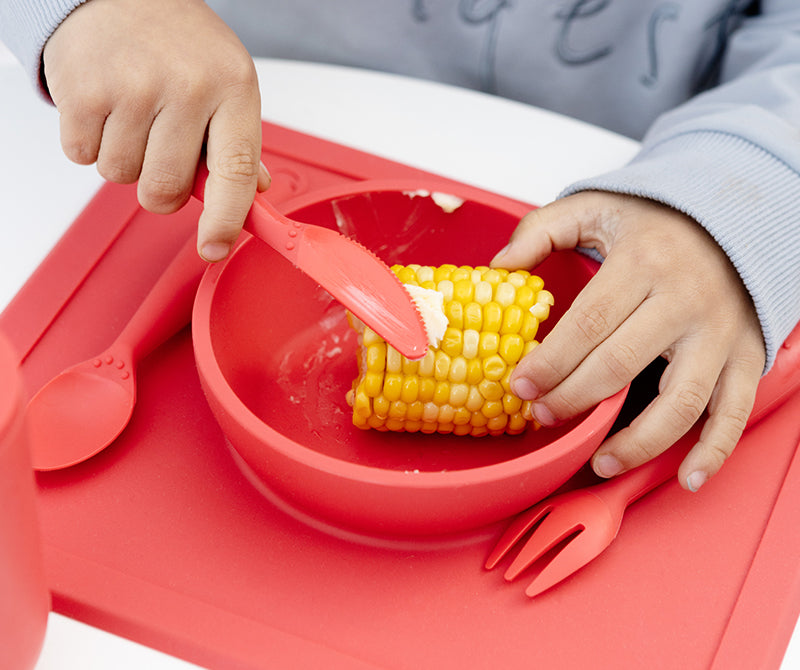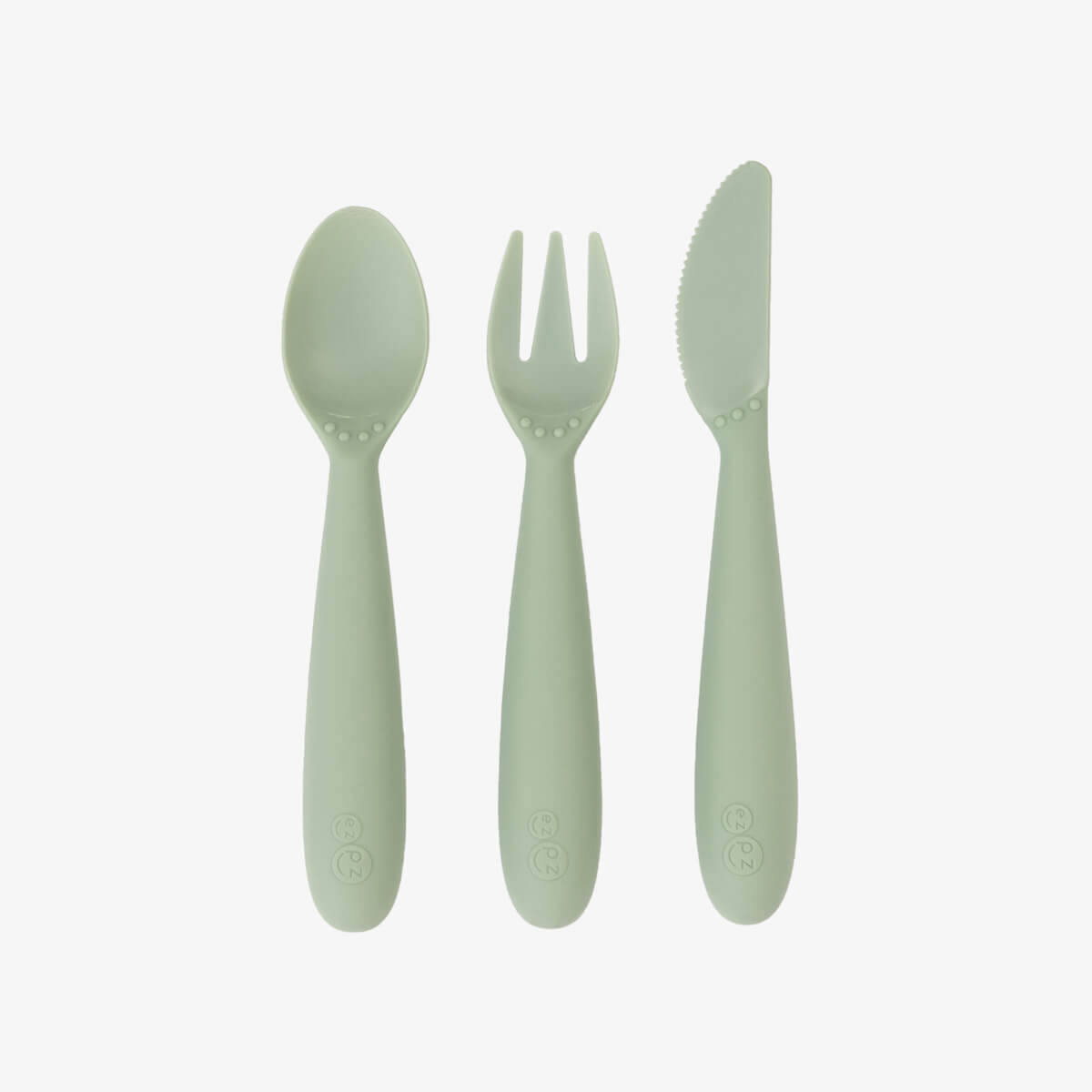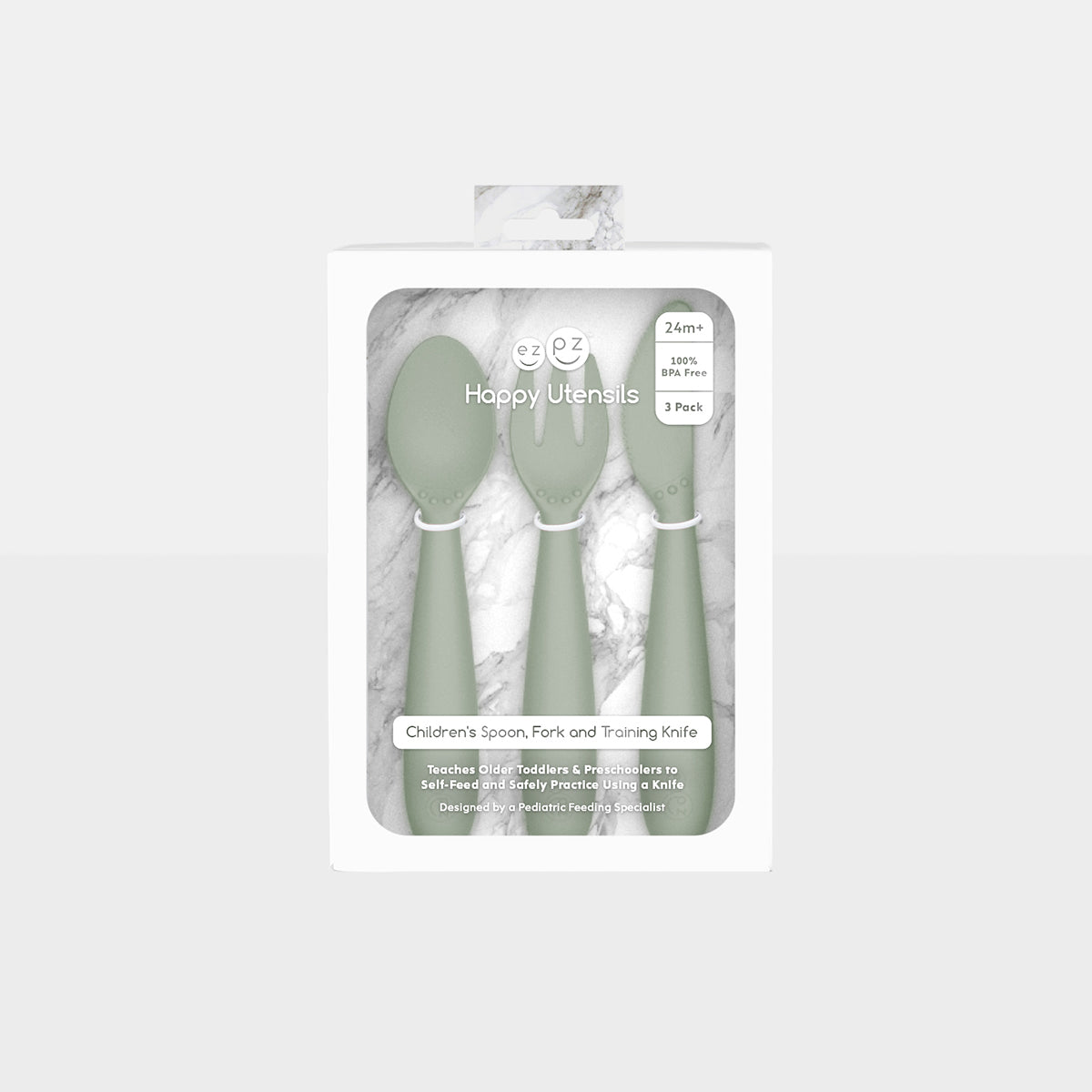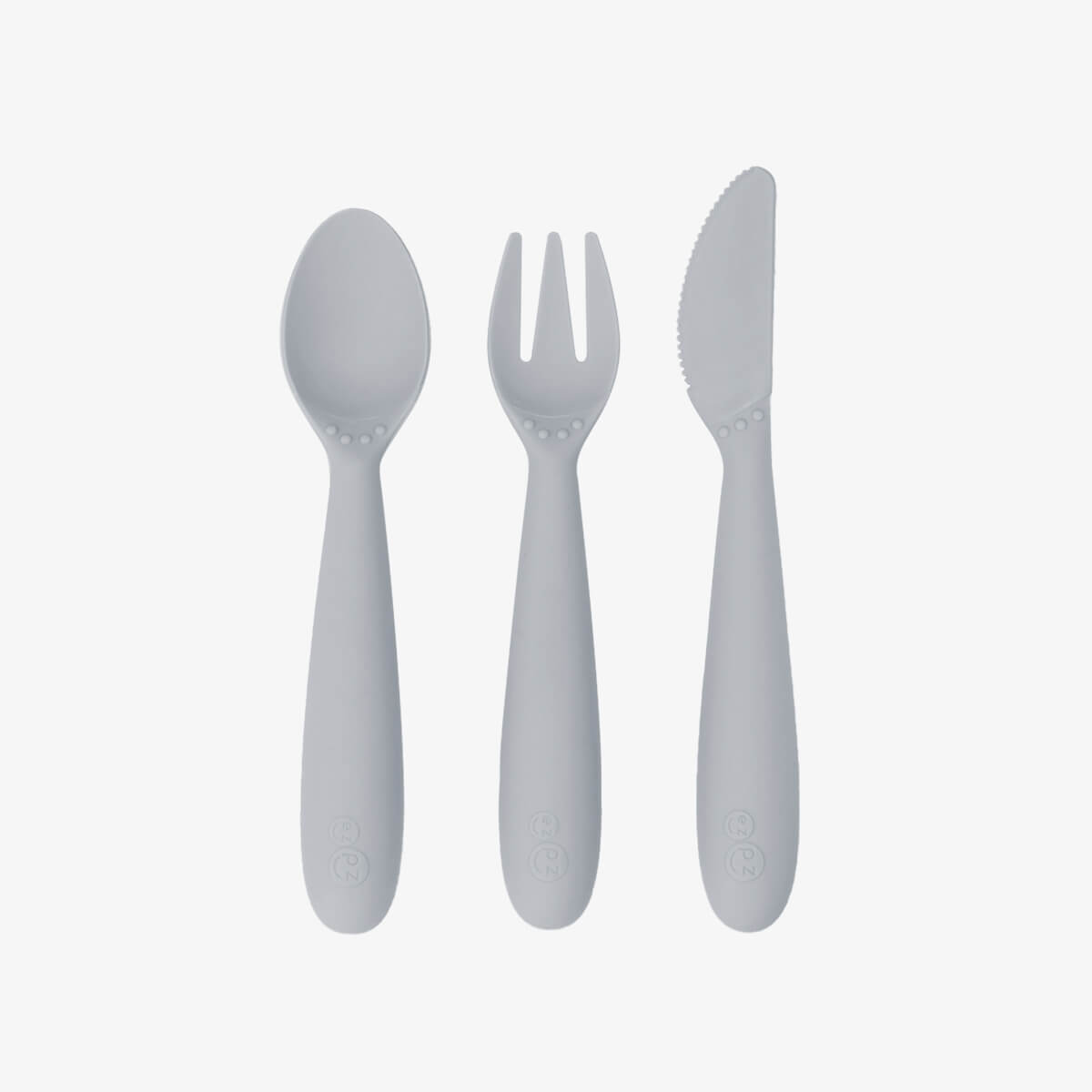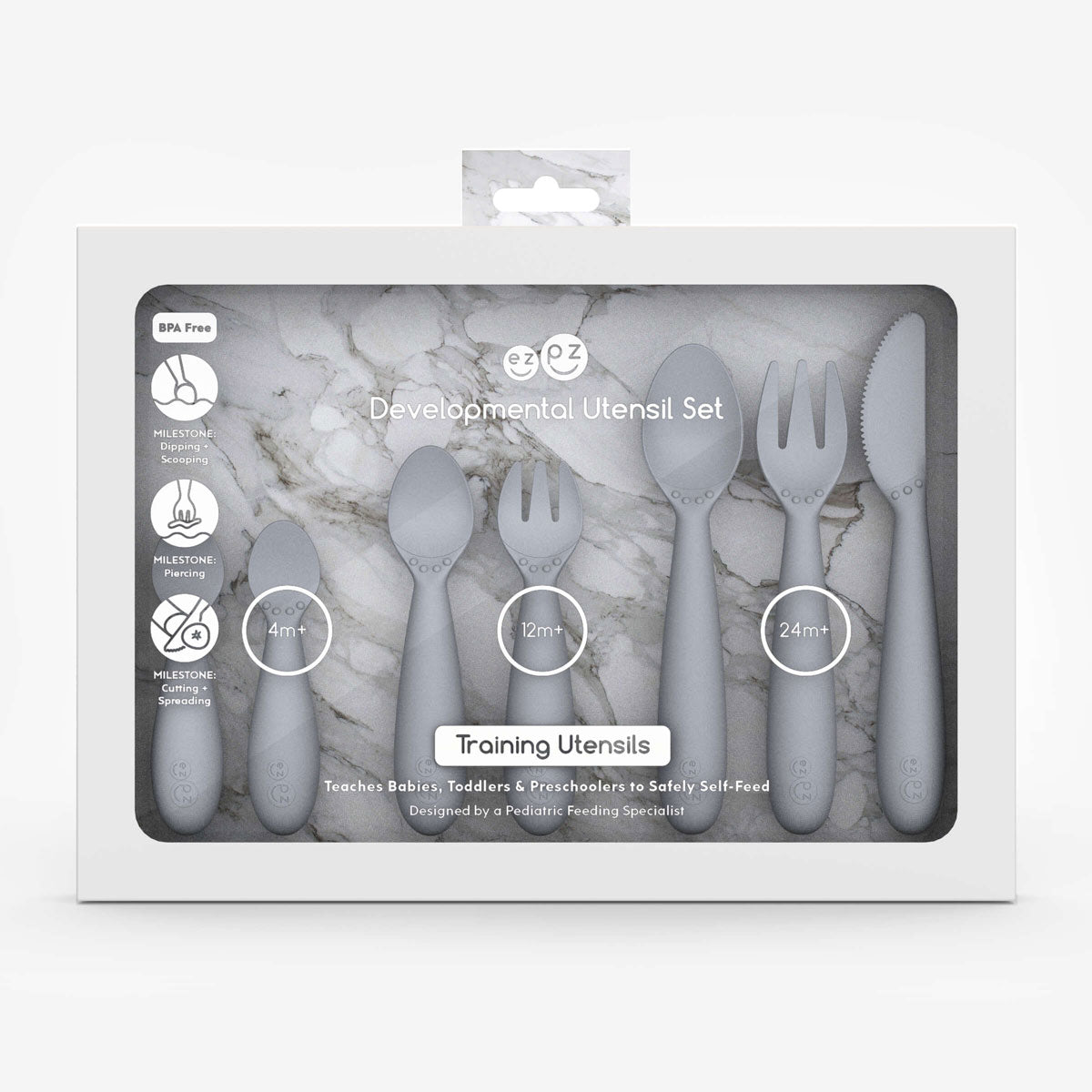When it comes to teaching utensil milestones, the age range is from about six-months to six years of age. We start encouraging dipping with a spoon from 6-12 months of age, then scooping with a spoon and spearing with a fork from 12-24 months. What skill is next? Using a knife, of course! Here are some tips on how to safely practice knife skills with your toddler.
Choosing a Knife: For safety and developmental reasons, you want to start this new skill with a training knife. The ezpz Training Knife has a nylon head that is strong enough to practice spreading and cutting, but safe enough where slip-ups won't cause an accident! It also has a silicone handle that is easy to grab and control, making hand movements safe.
- Skill + Age Level: Once your toddler is proficient and consistent with piercing food using a fork, then they are ready to learn how to use a training knife. This skill typically occurs around their second birthday if they have consistent exposure to utensils (spoons and forks) at mealtime.
- Older Kids: Some of the families I work with missed the opportunity to teach their toddler how to use a training knife because they didn’t think to teach that skill. That’s okay! If you have an older child that hasn’t been exposed to training knife practice, now is the time to teach them! And, since they are older, they can learn even more quickly.
Choosing Foods: When selecting foods and spreads to practice with, you want to start with soft textures and then advance to firmer textures. Practice with a training knife can take months (or years) before moving on to a metal knife. Also worth noting, we are not expecting a child to use a knife and fork together to cut up firm foods (such as meat) until six years of age. Here are some textures to try:
- Beginner Foods: bananas, canned green beans, mushrooms, avocado, rolled up lunch meat, string cheese, canned pear and peaches
- Beginner Spreads: hummus, marinara sauce, softened butter, mayonnaise, jelly, sour cream, mustard, ketchup and syrup
- Advanced Foods: mango, pepperoni, oranges, hamburger patties, potatoes, peanut butter + jelly sandwich and apple slices
- Advanced Spreads: peanut butter, cream cheese, marshmallow creme, refried beans, canned Cheez Whiz and Nutella
- Pretend Foods: Does practicing with food make you nervous? That’s okay, start by using play dough instead of food. You got this!
Positioning: When teaching your child how to use a training knife, you want them to be positioned to feel grounded, supported and safe. Here are some expert positioning tips:
- Sitting: Have your child seated at a table and check to make sure their feet are flat on the floor (toddler table + chair) or that they have a solid footrest (yoga block or cardboard box). Ultimately, we want a 90-degree angle at their hips, knees and ankles.
- Standing: Teaching knife cutting skills while standing is not a safe method for toddlers. But for families with older children that have better balance, dexterity and proprioceptive abilities, standing might be the preferred option.
-
Hand Placement: I teach toddlers to use their dominant hand to hold the knife and their non-dominant hand to position and hold the food. I encourage them to place the end of the handle in the middle of their palm, then put their index finger on the back of the knife providing steady pressure. Their thumb and middle finger can support the sides (similar to holding a pencil or crayon).
*Older children may want to practice using their non-dominant hand to figure out which configuration is more effective for them. For safety, please encourage them to experiment with a training knife so they can establish good positioning and placement before moving to a sharp metal knife.
I hope these ideas help you teach your little one how to use a knife for both spreading and cutting! Tag us in your toddler’s utensil adventures by using our hashtag #ezpzfun.


